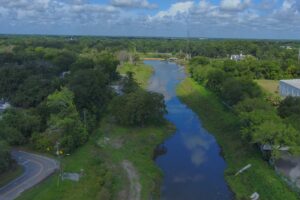The humble honeybee. You may have seen one buzzing around your lawn and landscape or other places where vegetation is present.
Beyond your own yard or providing the inspiration for decorative knickknacks and serving as a cereal mascot, do you know the important role honeybees play in the ecology of conservation areas owned and managed by the St. Johns River Water Management District? If you have ever visited one of the District’s conservation areas to hike, fish or just enjoy the outdoors, you may have noticed a variety of flowering plants and wildflowers. Honeybees, and others of the 20,000 distinct species of bees, transfer pollen from the stamen of a flower to other flowering plants. Flowering plants and bees rely on each other for survival.
These buzzing buddies not only impact the conservation areas purchased and managed by the District to protect water resources, they provide benefits to us all. Pollinators, including honeybees, are essential for pollinating agricultural crops, and natural and managed landscapes. A third of the food we eat is directly related to bees through pollination. Another third is indirectly related to alfalfa, a flowering plant in the legume family, pollinated by bees and commonly used for livestock feed.
As we celebrate National Honeybee Day on Aug. 20, consider taking a hike on a District public land to see the bees’ handiwork. Before you go, check out additional information about bees and their connection to our collaborative work.






